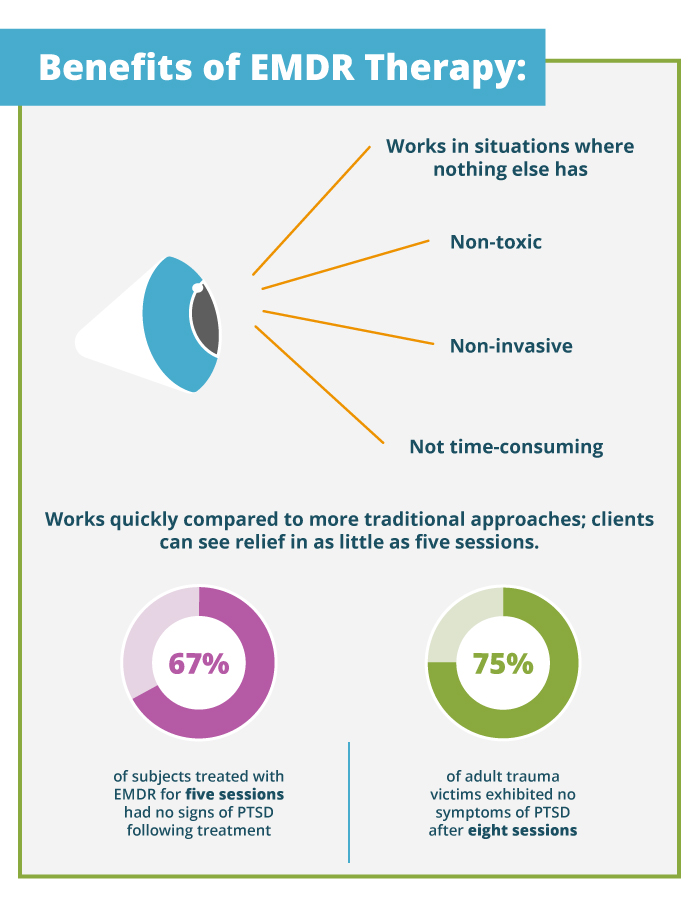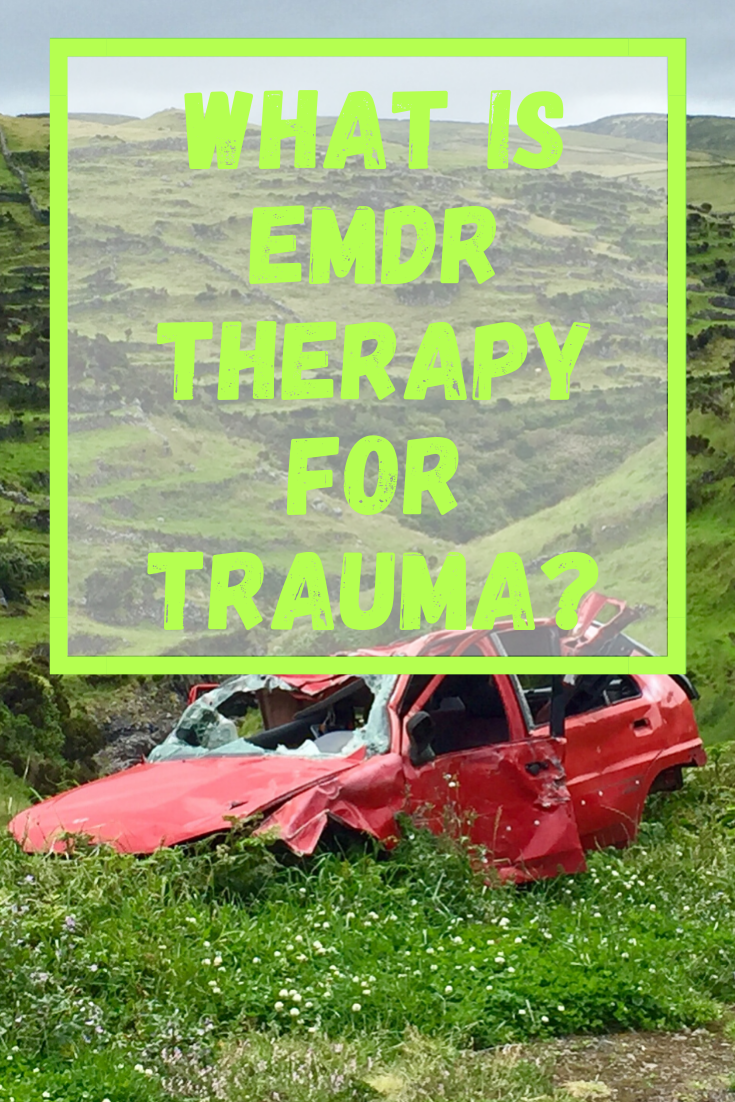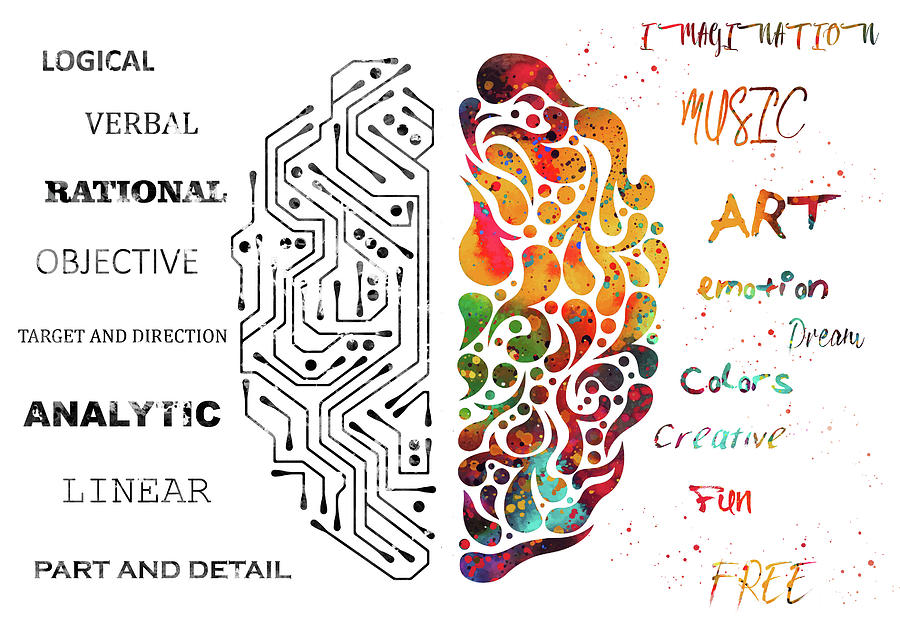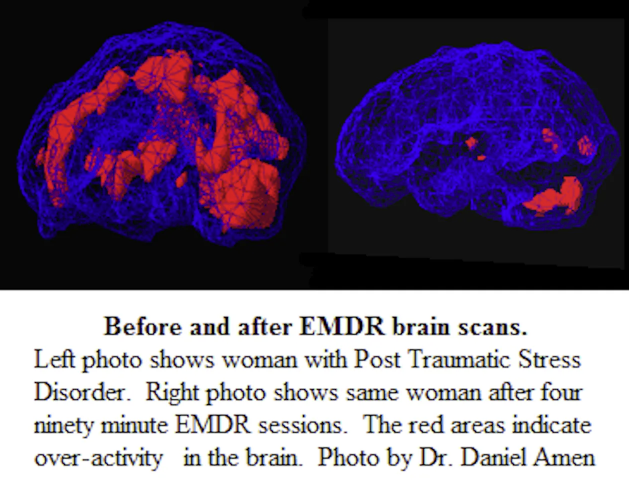What is EMDR Therapy?

You may have heard about EMDR or “Eye movement desensitization and reprocessing” therapy before. It has been around since in 1989 but it is becoming more and more popular. Initially it was developed to help with Post-Traumatic Stress Disorder (PTSD) and traumatic memories. Since its inception, use has widened to include helping people whose trauma may not meet the criteria for PTSD but is still impacting their lives.
In the modern age, we have learned that there are many different forms of trauma.
Different Types of Traumatic Events and Trauma
PTSD was first called “shell shock” and was identified in soldiers that were fighting during World War 1. For years, veterans, their families, and their loved ones recognized the emotional toll that combat can cause. This is what is often called a “big T” trauma. We recognize today that war, childhood abuse, sexual assault, domestic violence, violent crime, accidents, terrorism, etc are traumatic events. There are also what are referred to as “little t” traumas. As I recounted to a client – and this is not original I heard it at a Trauma Informed Care Convention – a sword will kill you if you are stabbed with it but if you are stabbed with enough toothpicks you can die from that too.
Little t traumas can impact us as much as big T traumas, much depends on our own individual experiences, sensitivity levels, and other factors such as adverse childhood experiences.


If It Traumatizes You, It Is Trauma
While some people beat themselves up thinking that those that experience certain traumas “have a right” to be traumatized while others don’t, I believe that if it causes you trauma it is a traumatic event. For example, some people might experience a serious car accident and have no last emotional effects. Someone else in the car might have PTSD due to the same car accident. Neither is “wrong” or “right” they are simply reacting. We cannot choose to not be traumatized by an event.
“Exposure to traumatic experiences has always been a part of the human condition. Attacks by saber tooth tigers or twenty-first century terrorists have likely led to similar psychological responses in survivors of such violence.” – Matthew J. Friedman, MD, PhD,
National Center for PTSD
EMDR Is One of The Most Effective Treatments
for Trauma
EMDR works by engaging both sides of the brain at the same time. [1] Most of us are familiar with terms like “right brain” and “left brain.” Each hemisphere of the human brain handles different tasks. As you can see in the graphic above, the left brain is more rational and analytical. The right brain is more creative and emotional.
The theory on how the brain processes trauma is this: it does not effectively process trauma.
You have also likely heard of the “fight or flight” response to threats. If a person is threatened we react in one of three ways, fight, flight, or freeze. When the brain experiences trauma, it effects several parts of the brain including the amygdala, which is responsible for this fight/flight/freeze response [2]. Another part of the brain, the hippocampus, helps the amygdala to file the memories away where they belong. [ 2 ] In the case of PTSD, traumatic memories are essentially “misfiled” and that is why people will re-experience traumatic events like they are watching a film play out.
How EMDR Works
Francine Shapiro, the doctor that discovered EMDR realized that by engaging both sides of the brain at the same time, it allowed traumatic memories to be “filed” where they should be in the brain. By doing so, traumatic events become less intense.
Therapists trained in EMDR work with clients by using a variety of techniques like tapping or having them watch finger movements to engage both sides of the brain when processing trauma.
What Treatment Is Like
Unlike traditional talk therapy, such as Trauma-Informed Cognitive Behavioral Therapy, the client does not need to describe traumatic events in detail to the therapist. In this way, the client is not re-traumatized and the therapist does not relive the event with the client. Rather, EMDR asks the client to focus on feelings surrounding the event in order to desensitize the client. Then, the client focuses on positive phrases in order to reprogram the brain. As the EMDR Institute explains in “What Is EMDR” which I highly recommend reading if you’d like to get much more detailed information:
“A target is identified and processed using EMDR therapy procedures. These involve the client identifying three things:
1. The vivid visual image related to the memory
2. A negative belief about self
3. Related emotions and body sensations.”
It Is Highly Effective
Dr. Shapiro wrote of her research: “a single session of the procedure was sufficient to desensitize subjects’ traumatic memories, as well as dramatically alter their cognitive assessments.” [ 3 ] While it is not a magical cure nor is it typical that a single session will alleviate all symptoms, EMDR is highly effective in treating both types of trauma.
Where to Find EMDR Trained Therapists
The EMDR Institute has a searchable database of EMDR certified therapists. Not everyone trained in EMDR chooses to be certified, so you may also see therapists in your area that mention EMDR but are not on this list. Certification requires an additional 20 hours of clinical consultation plus continuing education every two years. While there may be very effective therapists who are EMDR trained do keep in mind that certification shows that at the very least they took the time (and expense) to get and maintain additional education and supervision.
If you liked this post, use the buttons below to share on social media!


Stacey Aldridge, LCSW
Stacey is a therapist in private practice and the owner of Inspired Happiness Therapy and Wellness in Ridgeland, MS. She is trained in EMDR Basic. If you are in the state of Mississippi and are interested in seeing Stacey for therapy, please visit the Appointments page.




